#catalan cuisine
Text
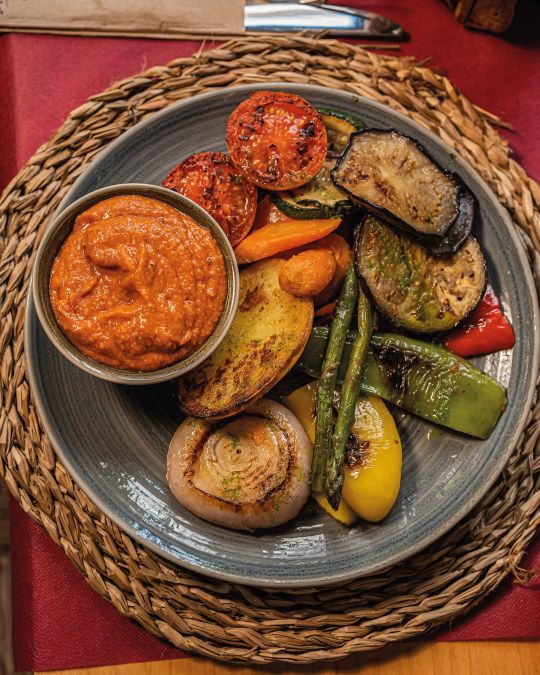
Simple food that feels like home 💚 grilled vegetables with romesco sauce.
Romesco is one of the most typical sauces of Catalan cuisine, particularly in the south of Catalonia. It's made of almonds, hazelnuts, smoke-grilled tomato (nowadays, most households make it with oven roasted tomato instead), garlic, sundried ñora pepper, olive oil, salt, pepper, and vinegar, and often a little bit of toasted bread, all of it crushed in a mortar. Each family can make it a little bit different. It goes very well with meats, fish, and vegetables.
Photo from Restaurant Can Maimó (Vilanova del Vallès, Catalonia).
#menjar#food#vegetables#romesco#foodblr#mediterranean food#catalan cuisine#healthy food#food photography#comfort food#mediterranean diet#summer food
316 notes
·
View notes
Photo

Catalan Cuisine | Colman Andrews
0 notes
Text
Culinaria Spain :: Edited by Marion Trutter
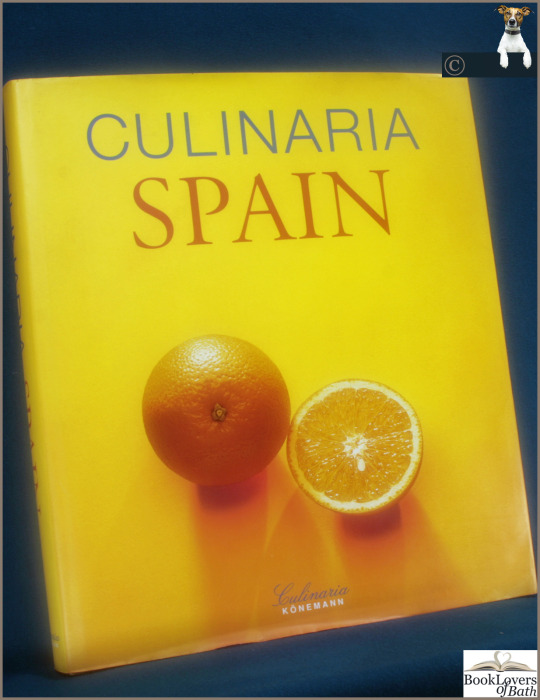
View On WordPress
#3-8331-1140-2#alioli mousse#andalusian cuisine#aragonese cuisine#balearic islands#basques cooking#books edited by marion trutter#catalan cheese#catalan cuisine#cold meats#ethnic cookery#first edition books#fried green pimientos#gunter beer#iberian peninsula#langoustines#madrilenos cooking#mediterranean cuisine#para pi car#restaurant food#salt cod fritters#spanish cookery#spanish cooking#spanish cuisine#spanish culinary customs#spanish food#spanish food habits#spanish journeys#spanish travel#tortilla
0 notes
Text





Une longue série sur la bouffe. Légumes, farcis ou non, et pizzas !
Marseille - resto aux Catalans, petits légumes, poivrons, asperges, betteraves, fenouil...
Douai, Arkhéos et sa taverne médiévale
Marseille, Place de Lenche : courgettes, pois chiches, poivrons, champignons...
les 2 dernières : Villers-au-Tertre, chez Julien et Katie avec des pizzas d' Halloween !
La suite dans quelques jours, avec le deuxième service !
#gastronomie#cuisine#marseille#nord#villers-au-tertre#halloween#pizza#tarte#légume#fenouil#les catalans#asperge#betterave#place de lenche#courgette#champignon#arkhéos#médiéval#cuisine médiévale
5 notes
·
View notes
Text
Sauté de fèves primeurs exquises

View On WordPress
#A nos Belles saisons#Artichauts et patates nouvelles à l&039;étouffée#Canigou#Collioure#Estofat de carxofes i trumfes noves#GASTRONOMIE CATALANE#Gastronomie méditerranéenne#Jean-Luc Modat (Recettes de cuisine et traditions catalanes)#Les Aspres#Les Pyrénes#Ma cuisine Catalane d&039;hier et d&039;aujourd&039;hui#Majoral Vidal Fruits & Légumes à Thuir#Pays Catalan#Perpignan#Pyrénées Orientales#Roussillon#Saltejat de faves#Saltejat de faves de Primavera#Sauté de fèves primeurs exquises#Thuir
2 notes
·
View notes
Text
Of all the dishes I’ve made for my family over the years, chicken and potato sofrito is probably the most popular, especially as the kids were growing up.
Sofrito is a Sephardi dish of meat (chicken, usually with the skin on, or beef chunks, seasoned with salt and pepper) and potatoes. It’s cooked for a long time on low heat with very little liquid. Traditionally, the potatoes are deep fried before they’re added to the meat. The occasional onion or root vegetable, such as carrots; squeeze of lemon juice; or pinch of cardamom and turmeric are added, but that’s about it. The slow cooking produces a concentrated sauce — the perfect example of a dish that’s larger than the sum of its simple ingredients.
And just to clarify: Sephardi sofrito should not be confused with the sofrito sauce of tomato, pepper and garlic that’s the base of many dishes in Latino, Spanish and Italian (where it is spelled soffritto) cuisines. Although, as we’ll see, all these versions are somehow related.
The word sofrito comes from the Catalan “sofregit” and Spanish “sofreír,” that mean to lightly fry something. According to Britannica.com, the origins of sofrito can be traced back to Catalonia, to a dish called sofregit. The dish emerged after new vegetables, such as carrots were introduced to the Iberian Peninsula by the Moors. The earliest recipe for sofregit appeared in the Catalan cookbook “Libre de Sent Soví,” circa 1324, and included onions, leeks, garlic and salt pork slowly cooked together.
It’s only after “discovering” the New World that tomatoes and peppers were added to the mix, which resulted in the sauce that’s so popular today. But by that time, the Jews had been expelled from the Iberian Peninsula. With the expulsion from Spain, Sephardi Jews emigrated to North Africa, parts of Europe and the Ottoman Empire, bringing the basic dish of lightly fried root vegetables and meat with them.
Some moved to modern day Israel in the 15th century, and even more during the 16th century after the Spanish Inquisition. They settled mainly in Jerusalem, Tiberias (where they called the dish sifrito), Safed (where it was sometimes known as sofrita) and Hebron. More Sephardi Jews arrived in the 19th century, mainly from Turkey and the Balkans.
“The Beauty Queen of Jerusalem,” a novel (and now a TV show on Netflix) by Sarit Yishai-Levi, follows four generations of the Sephardi Ermoza family in Jerusalem. Sephardi food descriptions are an essential part of the story, and among dishes such as hamin macaroni and biscochos, there is also mention of sofrito.
“My mother Luna passed away shortly before my eighteenth birthday. A year earlier, while the whole family was sitting around the table for lunch as usual and she was serving her famous sofrito with peas and white rice, she sat down on her chair and said, ‘Dio santo, I can’t feel my leg.’”
Matilda Koen-Sarano includes two sofrito recipes from Jerusalem in her Sephardi cookbook “Gizar kon Gozo” (Cooking with Ladino Flavors, written in Hebrew and Ladino). The first is a simple beef shoulder sofrito with nothing but potato, onion, oil, salt and pepper, which is the most popular version of the dish in Israel today. The second is made with chicken thighs, potatoes and many spices and taste agents, such as tomato paste and garlic.
In another Sephardi cookbook from Jerusalem, “The Cook from Agripas St.” (written in Hebrew), author Aviva Ben-Joseph includes three sofrito recipes. They’re all, in fact, different types of beef stews cooked with very little liquid on low heat; none of them contain potatoes or other vegetables.
Sofrito was also eaten by Sephardi Jews in Egypt. Cookbook author and food historian Claudia Roden includes two Egyptian sofrito recipes in “The Book of Jewish Food” from her own family: one with chicken and one with veal. She writes that the potatoes were originally deep fried before they were added to the pot with the meat, but says that her mother switched to tiny boiled new potatoes when the family moved to London. (The Jewish community as a whole left Egypt after the establishment of the state of Israel.)
In my house, sofrito means warm, satisfying homecoming. My version is as minimal as can be, and really easy to prepare. I use skinless, boneless chicken thighs, potatoes, oil, turmeric, salt and pepper, but you can use any cut of meat and add other root vegetables to the potatoes. Since both the chicken and the potatoes need the same cooking time, about one hour, I can fry the potatoes in the same dish as the chicken, adding even more flavor to the potatoes, and saving a dirty dish. I hope you’ll give it a go; maybe it will become your own family’s comfort dish, too.
7 notes
·
View notes
Text
@digitaladventurers | Daisuke Motomiya & V-mon
continued from here

- 'Course it's edible! - Miyako huffed, prompting her elbow on the counter - I mean, they've been using the same recipe and selling it for almost three centuries, right? How wouldn't it be edible, Daisuke?
She then turned to Hawkmon, who was sitting on a stool right next to her.
- Tell him, Hawkmon, tell him it's edible.
"We...we haven't really tried it, but..."
Her eyes widened, challenging the poor digimon to finish his sentence.

"...But! There's nothing like Catalan cuisine! The strong flavors that melt in your mouth, I'm sure the xocolata is no different, Daisuke-san!"
- Exactly! And if you're in doubt, you can always give it to V-mon, the true chocolate connoisseur to try it! - Miyako now glanced at V-mon and suddenly her confidence in his unconditional love for chocolate began to waver - ...r-right?
#Digital Friend~#digitaladventurers#{btw xocolata is a bitter chocolate with a high percentage of chocolate}#{you'll be scraping it with your teeth if you decide to eat it by itself}#{it's also a bit dusty or at least the one my pay parents brought was}#{it's definitely the kind of thing to grind and use in a recipe in hindsight}#{but it was all written in catalan and we are stupid}#{ALSO THIS POST WAS MADE USING THE NEW BETA EDITOR k bye}#{NOT HIGH PERCENTAGE OF CHOCOLATE IT'S A HIGH PERCENT OF COCOA}#digitaladventurers | Valentine’s Giri Xocolata#Chosen Children LET'S ROLL!! | In Character#A Panicking Yamato Nadeshiko | Adult Verse#MY BEAUTIFUL HAWKBABY | Hawkmon#DAISUKE NO | Daisuke Motomiya
45 notes
·
View notes
Video
undefined
tumblr
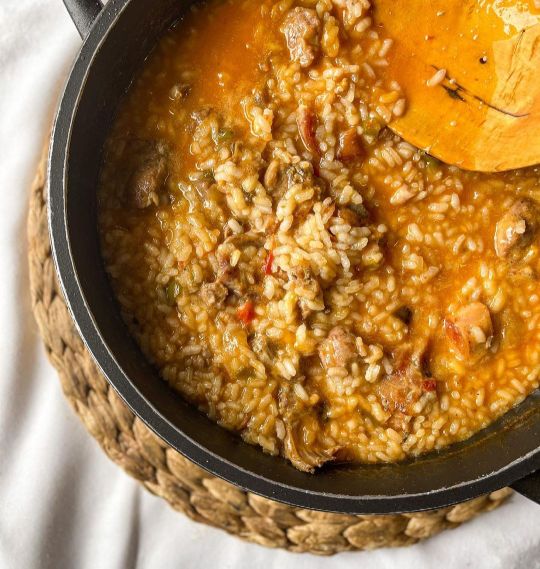
Arròs caldós de muntanya 😋
In Catalan, “arròs caldós” means “soupy rice”. This expression refers to a wide variety of dishes of Catalan cuisine whose main ingredients are rice cooked in a tomato and onion-based sofregit and stock, merging to create a delicious consistency. Different varieties of the dish are complimented with different ingredients. In the case of arròs caldós de muntanya, it has artichokes, chicken and rabbit.
Video by catalanfoodlover on Instagram.
#menjar#food#arròs caldós#rice#foodblr#food video#food photography#catalan cuisine#cuisine#delicious#yummy#cooking#foodie#foodlover#food stim#tasty#savoury#savory#mediterranean food#stew
103 notes
·
View notes
Text
25 juillet
seule au tempelhofer feld au lieu d'être à la soirée flirt speed dating, j'avais peur que tout le monde ait 22 ans et que je me sente à la ramasse comme hier soir. plus ça va et plus j'envie intensément les couples en couple depuis longtemps qui vivent ensemble dans des apparts bien décorés avec leurs chiens et leurs collections de vinyles et qui partent en vacances ensemble dans des jolies chambres d'hôtel et font de la rando dans la montagne et aussi des road trips et ils ont pas besoin de se sentir coupables parce qu'ils sont pas allés à une soirée speed dating dans un bar queer de neukölln.
j'ai envoyé mon dossier pour le open call cet après-midi, ça m'a pris la moitié de la journée parce que j'ai hésité pendant trois heures avec ce truc de synthé, finalement j'ai laissé tomber parce que je me suis dit que ça me stresserait trop, trop d'incertitudes. ça me laisse un petit goût de regret dans la bouche mais ça m'empêche pas d'essayer ailleurs, dans une soirée open mic par exemple, y a moins d'enjeux et c'est pas grave si ça merde parce que je suis pas payée. c'est peut être plus prudent de débuter comme ça. surtout que j'ai toujours pas de synthé. j'ai passé le reste de la journée à bidouiller des trucs sur garageband au lieu de travailler sur mon livre. je m'en fous d'être une ermite maintenant, d. aussi est un ermite, on passe nos journées à l'appart mais on se voit pas parce qu'on est chacun dans notre chambre. quand je vois personne de la journée je me persuade qu'on m'en veut. par exemple ça fait deux jours que je suis persuadée que n. m'en veut parce qu'elle a dit que la cuisine était sale alors que c'est mon tour de faire le ménage mais comme je l'ai fait sur plusieurs jours entre-temps elle a eu le temps de se resalir. ça me stresse des trucs comme ça parce que j'ai une responsabilité envers les autres et dès que j'ai une responsabilité j'ai peur de mal faire et qu'on m'en veuille. toujours toujours peur qu'on m'en veuille. et puis d'abord je suis pas une ermite puisque je sors tous les soirs.
27 juillet
j'aime bien n'avoir aucun problème de sommeil ici. je viens encore de me lever à onze heures et j'ai aucun mal à m'endormir le soir et je me réveille pas la nuit ni à l'aube, sauf quand quelqu'un est en train d'avoir un orgasme. n. m'a dit que la catalan avait mis quatre jours avant de lui écrire et que son message était tellement sans intérêt qu'elle lui avait même pas répondu. dimanche soir quand on est rentrés du lac elle était d'une humeur massacrante parce qu'elle attendait qu'il lui écrive alors que moi dans ma tête après avoir couché ensemble ils avaient passé la journée ensemble à apprendre à se connaitre en se promenant dans un parc en rigolant beaucoup et puis il l'avait invité à passer la nuit chez lui parce qu'ils voulaient plus se quitter et il lui avait préparé à manger comme dans un téléfilm de tf1 parce que je vis dans ce monde-là moi.
hier soir au lieu d'aller à la dyke march je suis allée voir la soirée de performances de son école de théâtre et dès la première perf quand ils ont chanté hakuna matata déguisés en lions en poussant des cris aigus je me suis dit que la soirée allait être longue. au moins ça m'a donné un élan de motivation pour faire mon show. en comparant ce qu'ils faisaient avec toutes mes petites expériences de scène accumulées au fil des années je me suis sentie totalement légitime. y a eu beaucoup de numéros de chant de gens qui chantaient pas très bien et je trouvais ça trop touchant, j'avais la chair de poule à chaque fois, mais j'ai aussi la chair de poule quand je regarde the voice. ça me bouleverse d'entendre des gens chanter, même mal. je mourrais d'envie d'être à leur place.
une fille a lu un texte archi cringe sur son copain qu'elle aime d'amour mais quand j'ai appris qu'elle avait 18 ans je me suis excusée mentalement de l'avoir jugée. elle m'a dit i don't wanna brag but my boyfriend is kind of a rockstar and he writes songs about me and i write poems about him and for our birthdays we write songs and poems to each other ahhh. elle me faisait penser à une fille bizarre de ma classe que tout le monde détestait et puis un jour elle a fugué et on l'a plus jamais revue. elle disait que le cou des filles la rendaient folle, esthétiquement parlant, et que chez les garçons c'était la nuque, et puis elle a dit "bi, point d'interrogation?" tout ça d'une traite. ça m'a fait penser à moi à 18 ans quand je disais que ma partie préférée du corps des garçons c'était les omoplates et ma partie préférée du corps des filles c'était la clavicule, sans me douter une seconde que je pouvais être bi. (toujours fan des omoplates par contre) à 18 ans j'ai dit à pit que je l'aimais par sms juste avant les grandes vacances et puis j'ai pleuré pendant des jours jusqu'à ce que je parte faire mon stage au festival d'avignon où j'ai découvert le Monde des Artistes. ça fait pile quinze ans cet été! j'ai envie de lui écrire pour lui dire que je suis à berlin, peut être qu'il fait toujours de la musique et qu'il me mènera à des musiciens intéressants.
un type m'a reconnue de l'année dernière mais moi je me rappelais pas de lui et j'ai l'impression d'avoir été particulièrement pas sympa en le disant. comme si j'avais oublié d'utiliser le filtre "être sympa" en lui parlant. c'est pas un gros symptôme de l'autisme ça? en chemin je suis passée devant un endroit de thérapie corporelle/danse qui avait l'air bien mais en allant voir sur le site j'ai vu que c'était 105 euros la séance d'une heure, ou la moitié du prix d'un microkorg d'occasion. comme avec deux séances j'irai pas loin, mieux vaut acheter le microkorg et rester traumatisée. j'en ai parlé à n. et elle m'a dit qu'y avait des jeunes diplômé.es qui proposent des séances pas chères pour s'entrainer mais ça me fait un peu peur, vue l'épaisseur de mon dossier. je lui ai dit i have ptsd when i have to have fun. j'adore cette phrase, elle est trop hardcore. au moment où je l'ai dit on a croisé deux filles blondes à qui elle a dit bonjour ou au revoir je sais pas et donc ça a coupé la discussion en deux et c'était encore plus pathétique. c'est même pas tant have fun que let go en fait, parce que je peux très bien m'amuser en chantant toute seule dans ma chambre par exemple. c'est une histoire de contrôle. après avoir mangé notre sandwich au halloumi elle est retournée à l'école pour la fête et moi je suis rentrée pour aller regarder le replay de la cérémonie des jo. en chemin je me suis arrêtée pour prendre en photo un vieux bar berlinois authentique qui passait les jo sur une télé à l'intérieur et un vieux monsieur aux longs cheveux blancs s'est arrêté pour me laisser prendre ma photo, moi la touriste insupportable, alors je lui ai fait un grand sourire en lui faisant signe qu'il pouvait passer et il s'est dépêché de rentrer et c'était mon interaction préférée de la journée.
2 notes
·
View notes
Text
Doing a little digging into Catalan cuisine again, and thinking of how Sylv's favourite dish is Valorian-style fish.
The first dish, under the "savoury dishes" section of the Catalan cuisine wiki page?
Catalan-style cod, with raisins and pine nuts!
2 notes
·
View notes
Text

Here are some facts about the Moors in Europe: They ruled Spain and Portugal 754 years before the fall of the Mali Empire.
1. The Moors brought a wide variety of new fruits and vegetables to Europe.
The Moors brought many new fruits and vegetables to Spain and Europe that were considered exotic novelties at the time. These products included pomegranates, peaches, lemons, oranges, saffron, cotton, rice, silk, sugar cane, and a variety of other fruits and vegetables. Even though they are commonplace today, the Spanish at the time considered these objects to be almost alien. Several centuries later, they are still important components of Spanish food and production.
2. The Moors Developed Far More Rapidly Than Medieval Europe
The Arabs had an advanced civilization known for its architecture, science, mathematics, and exploration when they conquered the Iberian Peninsula. When the Moors arrived in Spain, they brought with them architectural innovations that astounded European stonemasons. The Alhambra, a fortress and palace complex in Granada, Spain, is one of the most stunning examples of Moorish architecture. Its construction started in 1238, and its grandeur and beauty far outstripped those of any comparable palace. It is still one of the palaces of the Islamic world that has been preserved the best today.
3. Chess Became Popular Across Europe Because of the Moors
Chess has been played for more than 1,500 years, but the Moors brought the game in its present form to Europe. The Moors brought chess to Spain after it had spread from India to the Arabic world. It spread through Europe's courts and society very quickly after it gained popularity. Chess was a well-liked game of strategy and endurance in medieval Spain. Chess was first mentioned in writing in Spain in the Catalan Testament in 1010 AD.
4. The Moors Took Their Hygiene Very Seriously.
A Moor, according to a catchphrase, "would rather go without bread than without soap." The Moors were known for their love of cleanliness. Due to their customs and the demands of their religion, the Moors valued cleanliness and often bathed; in the Moorish town of Cordoba, there were about 900 public baths. This made it possible to maintain proper hygiene at a time when plumbing and running water were still uncommon. Some sources also assert that the Moors introduced some kind of soap to Europe, ushering in a new era of hygiene.
5. The Moors Placed a High Value on Education
The Moors placed a high value on education and made sure that everyone in their realm had access to it. This was in stark contrast to medieval Europe, where education was only available to the richest nobles and clergy and where 90% of the populace was still illiterate. In fact, there have even been instances of European Kings who are illiterate. The Moors founded 17 prestigious universities in Spain, including ones in Cordoba, Malaga, Granada, Seville, Toledo, and Almeria.
6. Many Moorish Words Are Still Used Today in Spanish and English
The Moors introduced new ideas and words to Europe after they arrived, and these quickly assimilated into the common language. Up to 4,000 words in the Spanish language have Arabic roots, including algebra, checkmate, and influenza. Cipher, alcohol, chemistry, typhoon, orange, alkaline, cable, and nadir are additional examples.
7. The Moors Were Very Resourceful
The old Roman irrigation systems that the Moors discovered in Iberia had great potential, so they quickly adopted, improved, and revived them. This increased agricultural productivity and boosted the economy. Additionally, they were able to grow new crops they had brought, including figs, dates, apricots, lemons, and oranges. Thanks to the Moors' creative irrigation methods, Spain quickly rose to become one of Europe's top producers of crops.
8. The Moors brought significant Changes to Spanish Cuisine
For Europeans, spices were an uncommon commodity, and their cuisine was frequently regarded as bland. By bringing over hundreds of unusual spices, fresh recipes, and cutting-edge cooking techniques, the Moors altered that. We still eat a variety of wonderful dishes as a result of this culinary revolution. The spice markets of the Moors were renowned for their variety and provided options for chefs of all types. These medieval markets must have had the most amazing sights and smells.
#moors#mali#arabs#history#spain#portugal#europe#cuisine#food#spaintravel#lonely planet#architecture#good vibes#vibes#lifestyle#style#mood#aes#aesthetic#aesthetics
10 notes
·
View notes
Text
Poulet à la Roussillonnaise
Pollastre a la rossellonesa
Par Jean-Luc Modat
(Recettes de cuisine et traditions catalanes)
Cuisiner un bon plat catalan aux divines saveurs du Roussillon ? C’est mettre en partitions des ingrédients pour une symphonie de saveurs et faire chanter nos racines catalanes. Cette réflexion prend ici tout son sens en échos aux menaces qui pèsent sur nos territoires ruraux. Ils sont gardiens de nos…

View On WordPress
#Aspres#Jean-Luc Modat#LA GAZETTE CATALANE.COM#Ma cuisine Catalane d&039;hier et d&039;aujourd&039;hui#Pays Catalan#Perpignan#Poulet à la Roussillonnaise#Pyrénées Orientales#Roussillon#Thuir
2 notes
·
View notes
Text
You know what? Fuck it.
Girl Dinner

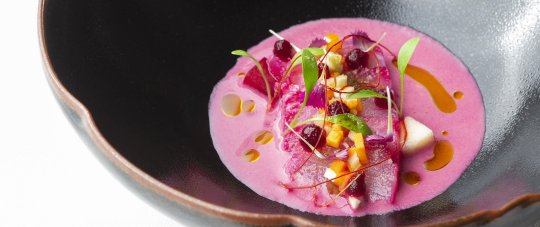
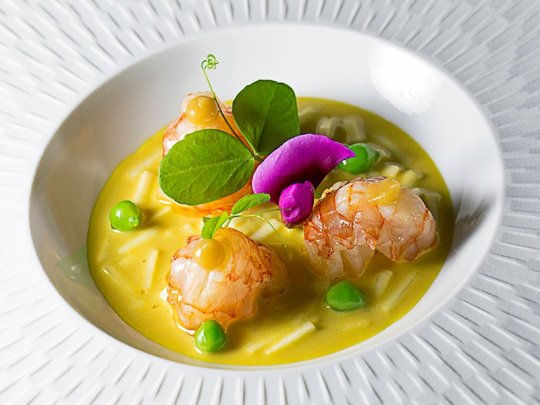
Carme Ruscalleda i Serra, who holds seven Michelin stars across her three restaurants in Catalonia and Japan, known for bringing traditional Catalan cuisine to an international audience.

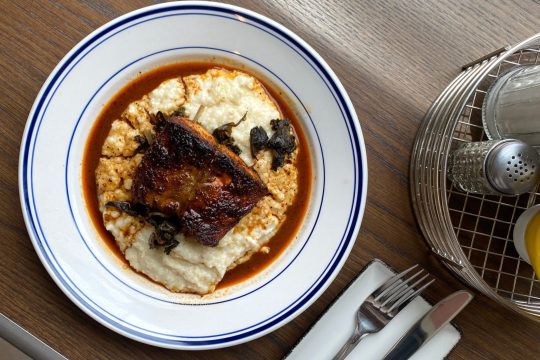

Mashama Bailey, winner of the 2022 James Beard Award for Outstanding Chef and Chairwoman of the Edna Lewis Foundation, which preserves and celebrates the history of African-American cookery.
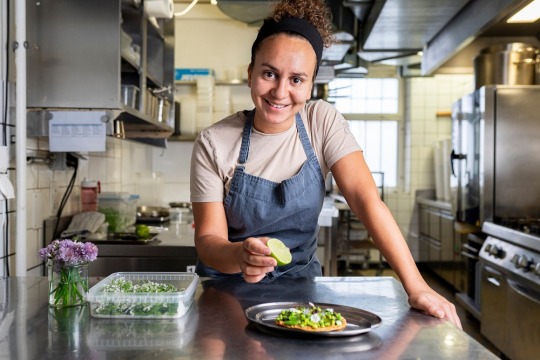


Zineb "Zizi" Hattab, the first vegan chef in Switzerland to be awarded a Michelin star for her restaurant KLE in Zurich; her cooking is noted for its intense flavors and complex balanced dishes in a casual setup.
Girl Math



Maryam Mirzakhani, who won the Fields Medal (the most prestigious award in mathematics) in 2014 for her work on the dynamics and geometry of Riemann surfaces.



Hee Oh, Vice President of the American Mathematical Society, who has worked extensively on counting and equidistribution for Apollonian circle packings, Sierpinski carpets and Schottky dances.



Svetlana Jitomirskaya, who co-solved the Ten Martini Problem in 2019 and won the Dannie Heineman Prize for Mathematical Physics in 2020.
Girl Economics


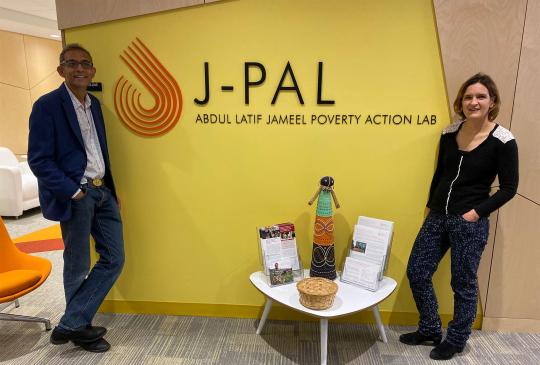
Esther Duflo, co-founder of the Abdul Latif Jameel Poverty Action Lab at MIT, professor of Poverty Alleviation and Development Economics, and co-recipient of the 2019 Nobel Memorial Prize in Economic Sciences.



Mariana Mazzucato, chair of the World Health Organization's Council on the Economics of Health for All and member of the United Nations' High-Level Advisory Board on Economic and Social Affairs.



Gita Gopinath, deputy managing director of the International Monetary Fund, awarded the Pravasi Bharatiya Samman award in 2019 for her work as an economics academic.
Girls* are fucking rad actually. Pay them the respect they're due.
*This statement enthusiastically includes trans girls and women. Bigots kindly fuck off.
#girl dinner#girl math#girl economics#terfs dni#terfs die actually#'girl dinner' can be relatable but 'girl math' makes me want to set fires
7 notes
·
View notes
Note
what do you like the most about Spanish??
Spanish reminds me of the good parts of my childhood. My mum's (ex) in-laws had a house in Spain (technically in the Països Catalans but I didn't know the difference back then and yes I'm planning on learning Catalan too).
We spent a lot of holidays there enjoying the beach and the salinas and the cuisine. The first time I flew alone in an airplane was when I was 5 and visiting my (ex) grandparents. We'd listen to Spanish (occasionally Mexican and Cuban) music on the balcony. I remember seeing flamingos in the wild for the first time and eating dates and going to an easter procession.
My family tried to learn a little Spanish to not be one of those annoying tourists. Not very successfully tbh because my (ex) step dad at some point told someone "mi soy un problema".
So when I had the choice to continue with Latin or start Spanish I remembered all the good times I had in Spain and decided I want to learn it and perhaps even return to Spain for a bit longer (I ended up living in Galicia for a semester).
12 notes
·
View notes
Note
modern au!
send me an au and i’ll give you 5+ headcanons about it

This made me laugh bc you know how much I've bitched to you about how complicated a modern au is for Teresa :P
While in the main verse Teresa is from Casatejada (Western Spain), in the modern au I think she would have been raised in Barcelona for a good chunk of her childhood, and her family moved to Western Spain, presumably to be with her father's family. So she's both Catalan and a Spaniard and is proud of her heritage. I don't think they would live in Casatejada though, so I haven't settled just yet on where exactly.
I think Teresa works for a government body of some sort- possibly the UN (for this AU I would pretend there was a location in Madrid for her to work at) where she gets sent out to help others, possibly with Women's Health and Rights in third world countries. But again, it's really hard to translate canon events to a modern day without ethical implications...which is why I'm more vague and never settled on a concrete idea. Just something that allows her to be in a dangerous location and meet Sharpe out in the field, but also aligns with her character :P
Teresa and Sharpe actually get to see each other way more in the modern au than the main one bc PHONES and planes and internet! Yay! With him in the military and her constantly working it's difficult to meet up, but Teresa's work allows her to work from home or elsewhere, so either she spends Sharpe's leave with him in London, or he stays with her in Madrid.
Teresa ends up moving to London into Sharpe's flat after a few years. They were never able to fully commit to moving in together because of their jobs and duties, but eventually the distance and time spent away became too much. They wanted to spend time together, and even when they had to say goodbye, they always could look forward to seeing each other. They wanted to wake up beside each other, have their slippers side by side, do laundry and dishes and cook together. They don't like staying in their respective flats without the other because wherever they are is home, and when he finally asks her to stay for good, she agrees and they make love. She moves in very soon after, as she found out they were going to be parents! Teresa still keeps her flat in Madrid, as she does still have to go back from time to time, and having her family to help is invaluable to her when Sharpe is abroad.
When Antonia is old enough and Sharpe finishes his 20 year contract with the army, they decide to move back to Spain and live in Toledo. With Sharpe retired he's very excited to be a househusband and spend his time with Antonia, and Teresa goes to the city to work or works from home. Sharpe likes to update her on the shenanigans their daughter gets up to during the day and he has a beautiful garden in their backyard and Teresa never thought she could be so happy.
Teresa's time in London made her realize just how bland Spanish cuisine is. Sharpe introduces her to roast beef and gravy, wigan kebabs, fish and chips, tikka masala....she loves gravy and can't get enough of it. She learns to make English food when Sharpe stays with her in Spain, and she had a lot of cravings during her pregnancy that thankfully could be sated in London :P
#;letters#prvtocol#(thank you!!!!)#(i'm still working on the marriage ask you sent me LOL that one's like a thesis and im still doing research on it)#(tolkien au though............that one's really kicking my ass)#(but anyways yeah. i rarely write in the modern au bc its a headache. also i dont have enough icons for it)#(sadly assumptas modern works REALLY date the film...or she cuts her hair super short and i cried)#(bc i couldnt use a decent chunk of her films after she cut her hair bc i hated it LKJDGFSDFG)#(also me: calls out spanish cuisine. just eggs and potatoes....no salt.....no butter....cries in american)
6 notes
·
View notes